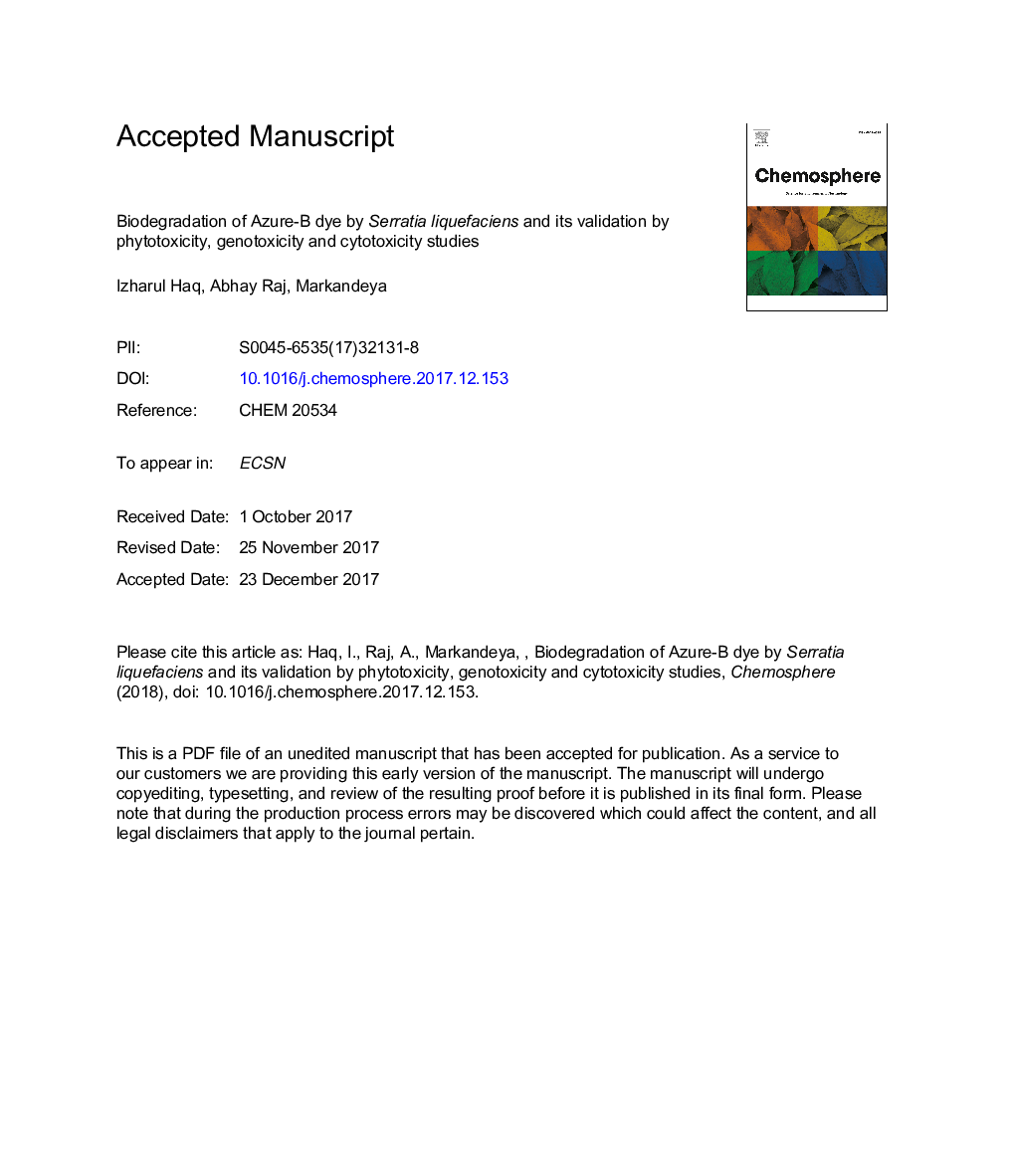| کد مقاله | کد نشریه | سال انتشار | مقاله انگلیسی | نسخه تمام متن |
|---|---|---|---|---|
| 8852139 | 1618775 | 2018 | 43 صفحه PDF | دانلود رایگان |
عنوان انگلیسی مقاله ISI
Biodegradation of Azure-B dye by Serratia liquefaciens and its validation by phytotoxicity, genotoxicity and cytotoxicity studies
دانلود مقاله + سفارش ترجمه
دانلود مقاله ISI انگلیسی
رایگان برای ایرانیان
کلمات کلیدی
موضوعات مرتبط
علوم زیستی و بیوفناوری
علوم محیط زیست
شیمی زیست محیطی
پیش نمایش صفحه اول مقاله

چکیده انگلیسی
The azo dyes in textile industry are a major source of environmental pollution and cause serious threat to aquatic flora and fauna. The present study aims to evaluate the potential of previously isolated lignin peroxidase (LiP) enzyme producing Serratia liquefaciens in degradation of Azure-B (AB) dye. S. liquefaciens showed rapid decolourisation of AB dye (100â¯mgâ¯Lâ1) in mineral salt medium (MSM) supplemented with 0.2% glucose and yeast extract, and more than 90% dye decolourisation was observed at 48â¯h when incubated at 30â¯Â°C. Decolourisation conditions were optimized by Response Surface Methodology (RSM) using Box-Behnken Designs (BBD). The dye degradation was further confirmed by ATR-FTIR and GC-MS analysis. Toxicological studies of untreated (UT) and bacterial treated (BT) AB dye solutions were studied by using phytotoxicity, genotoxicity and cytotoxicity endpoints. Phytotoxicity assay using Vigna radiata indicated that bacterial treatment led to detoxification of AB dye. Genotoxicity assay with Allium cepa showed that pure AB dye solutions significantly reduced mitotic index (MI) and induced various chromosomal abnormalities (CAs) like c-mitosis, stickiness, chromosome break, anaphase bridges, vagrant chromosomes and binucleated and micronucleated cell in the root tip cells, whereas, bacterial treated solutions induced relatively less genotoxicity in nature. Improved cell survivability (%) was also noted in kidney cell line (NRK-52E) after S. liquefaciens treated dye solutions than the pure dye solutions. The findings suggest that S. liquefaciens could be a potential bacterium for azo dye degradation, as it is effective in lowering of toxic effects of AB dye.
ناشر
Database: Elsevier - ScienceDirect (ساینس دایرکت)
Journal: Chemosphere - Volume 196, April 2018, Pages 58-68
Journal: Chemosphere - Volume 196, April 2018, Pages 58-68
نویسندگان
Izharul Haq, Abhay Raj, Markandeya Markandeya,